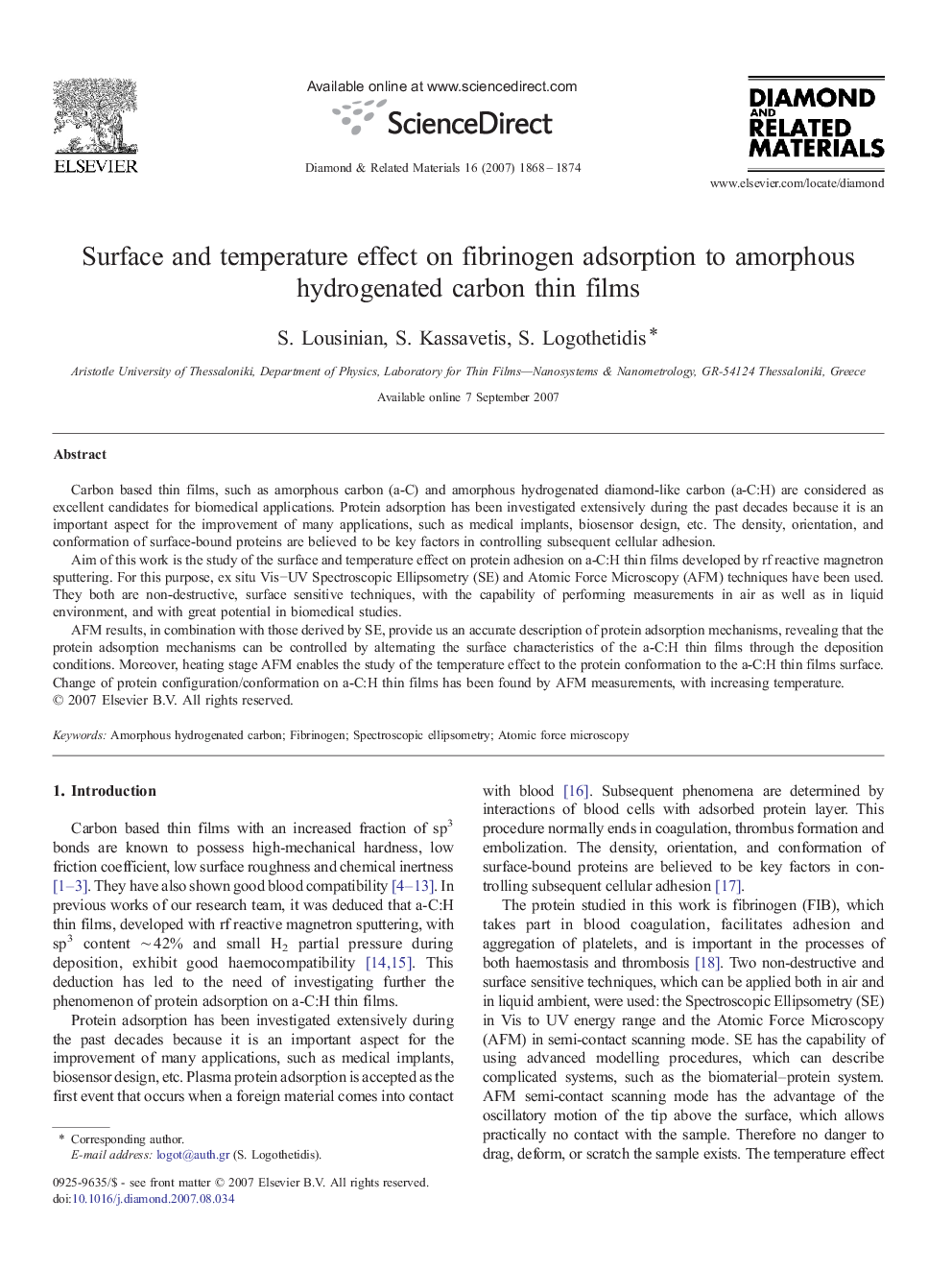| Article ID | Journal | Published Year | Pages | File Type |
|---|---|---|---|---|
| 703635 | Diamond and Related Materials | 2007 | 7 Pages |
Carbon based thin films, such as amorphous carbon (a-C) and amorphous hydrogenated diamond-like carbon (a-C:H) are considered as excellent candidates for biomedical applications. Protein adsorption has been investigated extensively during the past decades because it is an important aspect for the improvement of many applications, such as medical implants, biosensor design, etc. The density, orientation, and conformation of surface-bound proteins are believed to be key factors in controlling subsequent cellular adhesion.Aim of this work is the study of the surface and temperature effect on protein adhesion on a-C:H thin films developed by rf reactive magnetron sputtering. For this purpose, ex situ VisUV Spectroscopic Ellipsometry (SE) and Atomic Force Microscopy (AFM) techniques have been used. They both are non-destructive, surface sensitive techniques, with the capability of performing measurements in air as well as in liquid environment, and with great potential in biomedical studies.AFM results, in combination with those derived by SE, provide us an accurate description of protein adsorption mechanisms, revealing that the protein adsorption mechanisms can be controlled by alternating the surface characteristics of the a-C:H thin films through the deposition conditions. Moreover, heating stage AFM enables the study of the temperature effect to the protein conformation to the a-C:H thin films surface. Change of protein configuration/conformation on a-C:H thin films has been found by AFM measurements, with increasing temperature.
